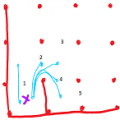Minos 2013 Registration Now Open
Minos is with us again. It is now possible to register for the 2013 Minos event which takes place this year on April 13th and 14th at Royal Holloway, University of London. Our thirteenth weekend conference on micromouse and other robotics related matters follows the success of previous MINOS events. We…
